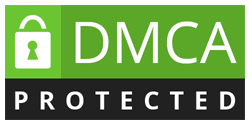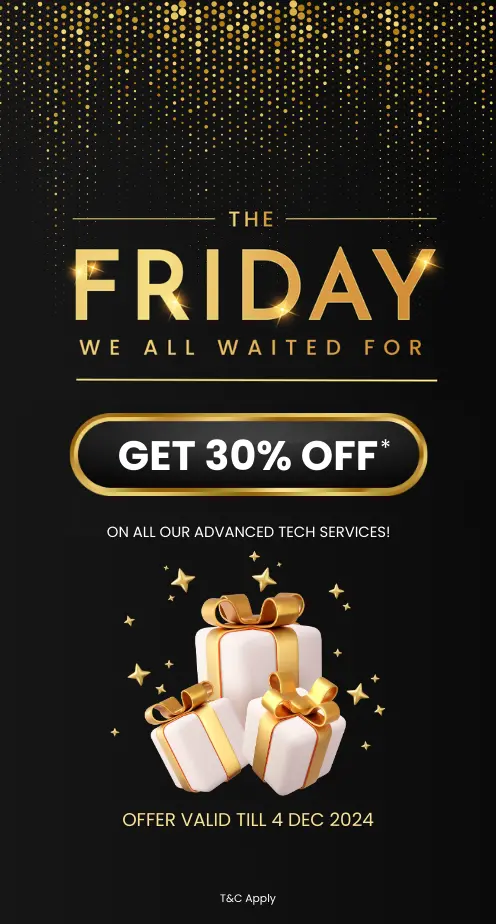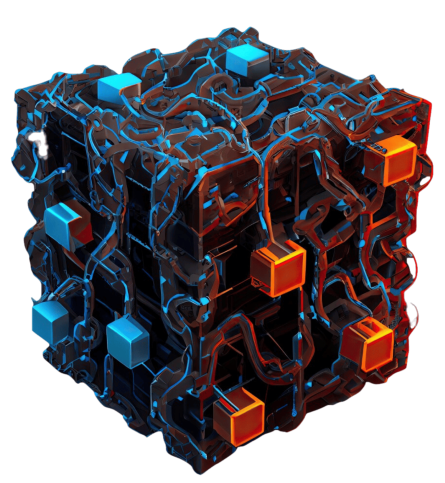Blockchain is shaking up the way businesses operate by making processes more secure and transparent. It helps reduce fraud and keeps data safe, which is a big win for companies. More and more businesses are turning to blockchain to boost efficiency and stay ahead of the game. In fact, the global blockchain market is expected to reach a whopping $94 billion by 2027!
That’s why several leading enterprises in the U.S. have successfully integrated blockchain into their operations. Walmart has implemented blockchain for supply chain management, enabling real-time tracking of food products. It reduced the time required to trace food sources from 7 days to just 2.2 seconds, enhancing safety and efficiency.
In this blog, we will explore the types of blockchain solutions for enterprises and the step-by-step process to develop them. Let’s start!
Key Market Takeaways for Blockchain Solutions for Enterprises
According to FortuneBusinessInsights, the global blockchain technology market is growing fast. It is expected to reach USD 746.41 billion by 2032, up from USD 27.85 billion in 2024. This growth comes from blockchain’s ability to improve transparency, security, and efficiency across industries like finance, healthcare, supply chain, and government.
Source: FortuneBusinessInsights
More businesses are adopting blockchain to solve problems like fraud prevention, data privacy, and operational inefficiencies. It is also opening up new business models such as DeFi and tokenization.
Many companies have already seen success by using blockchain. For example, Nestlé worked with Techrock to implement blockchain for verifying the quality of infant products in China. This helped rebuild trust after a major food safety issue.
Renault partnered with IBM to create a blockchain platform for regulatory compliance in the automotive sector. This move reduced non-compliance costs and supported their sustainability efforts. Marco Polo Network is using blockchain to simplify trade finance by automating settlement processes and increasing transparency between importers and exporters. These examples show how blockchain is making a difference in various industries.
Work with Ex-MAANG developers to build next-gen apps schedule your consultation now
Why Enterprises Are Shifting Towards Blockchain?
Blockchain provides businesses with the expertise and tools they need to enhance operations. It improves security by ensuring immutable records and reducing fraud risks. With transparent and verifiable transactions, it offers greater trust in processes.
Blockchain also boosts cost efficiency by automating tasks through smart contracts, eliminating the need for intermediaries. Its decentralization removes single points of failure, making systems more reliable and less prone to disruptions or hacks.
Real-World Examples
- Walmart uses blockchain to track its supply chain and ensure food safety. This has allowed the company to improve transparency and efficiency across its operations. In 2024, Walmart’s revenue exceeded $600 billion.
- Maersk, a leader in global trade logistics, leverages blockchain to streamline its shipping processes. This has helped reduce costs and improve supply chain management. Maersk’s annual revenue is over $60 billion.
- JPMorgan adopted blockchain for payments, enabling faster and cheaper transactions. The company’s revenue reached $132 billion in 2024. These examples highlight how blockchain is revolutionizing different industries, improving security, and driving growth.
Enterprise Blockchain Features You Must Know
Enterprise blockchain is transforming how businesses operate, providing new opportunities for efficiency, security, and trust. Here’s a breakdown of the key features that make it valuable for enterprises:
1. Decentralization
Decentralization means that no single entity controls the blockchain network. Instead, data is shared across multiple nodes (participants). This makes the system more resilient, as there’s no single point of failure. It also reduces reliance on intermediaries like banks and auditors, making transactions faster and more cost-effective.
Why Enterprises Need It:
- Eliminates Single Points of Failure: Reduces risks like server crashes in cloud systems.
- Reduces Reliance on Intermediaries: Cuts out middlemen like banks and auditors, reducing overhead costs.
- Enables Peer-to-Peer Transactions: Streamlines transactions, cutting processing time by up to 80%.
2. Immutability
Once data is added to the blockchain, it can’t be changed or deleted—this is what we call immutability. It’s like a digital fingerprint for each piece of data, secured through cryptographic hashing.
Why Enterprises Need It:
- Prevents Fraud: Stops activities like invoice tampering.
- Audit Trails for Compliance: This simplifies adherence to regulations like HIPAA and GDPR.
- Legal Evidence: Smart contracts act as “digital notaries” that provide legally recognized evidence in disputes.
3. Transparency
Transparency means that everyone in the network can see the same data in real-time, which builds trust among participants. Although permissions control who can access what data, everyone with the right access will see the same information.
Why Enterprises Need It:
- Builds Trust in Multi-Party Workflows: Improves collaboration between suppliers, regulators, and partners.
- Reduces Disputes: A single source of truth ensures fewer disagreements over data discrepancies.
- Enables Ethical Sourcing: Blockchain can track products, like conflict-free minerals, ensuring ethical standards are maintained.
4. Smart Contracts
Smart contracts are digital agreements that automatically execute when certain conditions are met. For example, they can trigger payments or send alerts without needing a middleman.
Why Enterprises Need It
- Reduces Paperwork: It speeds up contract execution, often by up to 90%.
- Minimizes Human Error: Automated compliance checks eliminate manual mistakes.
- Enables New Revenue Models: Businesses can implement usage-based micropayments or other novel business structures.
5. Interoperability
Interoperability means that different blockchains can communicate with each other, making it easier for businesses to connect new technology with existing systems like ERP or IoT. This also allows for seamless transfers of digital assets, such as NFTs, across various blockchains.
Why Enterprises Need It:
- Connects Legacy Systems: Facilitates the integration of older systems like ERP or IoT with blockchain technology.
- Enables Multi-Chain Asset Transfers: Allows seamless transfers of assets, such as NFTs, across different blockchains.
- Future-Proofs Investments: Avoids vendor lock-in, ensuring flexibility and scalability for future developments.
6. Consensus Mechanisms
Consensus mechanisms are the rules that help verify transactions without needing a central authority. There are different types, such as PoA, PBFT, and PoS, each suited to various needs.
| Mechanism | Best For | TPS (Transactions Per Second) | Energy Use |
| Proof of Authority (PoA) | Private chains (banks) | 10K+ | Low |
| PBFT (Practical Byzantine Fault Tolerance) | Consortiums (supply chain) | 2K-5K | Medium |
| Proof of Stake (PoS) | Public chains (DeFi) | 100-1K | Low |
Why Does It Matter?
- Determines Speed: Affects transaction processing speeds—enterprise chains can achieve speeds on par with Visa’s level.
- Impacts Compliance: Certain mechanisms, like PoA, are more compliant with regulations (e.g., GDPR), making them a better fit for private enterprise chains.
Types of Blockchain Solutions for Enterprises
Blockchain technology isn’t a one-size-fits-all solution. Different industries need solutions that fit their specific needs. These needs include industry requirements, compliance standards, and business goals. Here are the four main types of blockchain architectures for enterprises.
1. Private Blockchains
Private blockchains are restricted networks where a single organization or consortium controls access. They prioritize privacy, speed, and regulatory compliance, making them ideal for industries like banking, healthcare, and government.
Key Features:
- Permissioned Access: Only authorized participants can join.
- High Scalability: Faster transactions due to limited nodes.
- Custom Governance: Rules are set by the owning entity
2. Consortium Blockchains
A hybrid between public and private chains, consortium blockchains are governed by multiple pre-approved organizations. They strike a balance between decentralization and control, perfect for cross-industry collaborations.
Key Features:
- Shared Governance: Decisions require consensus among members.
- Enhanced Trust: Transparency across partner networks.
- Cost Sharing: Infrastructure costs are distributed.
3. Hybrid Blockchains
Hybrid blockchains blend the privacy of private chains with the transparency of public networks. Selective data is made public, while sensitive information stays encrypted.
Key Features:
- Flexible Access: Public verification is for auditors, and private access is for internal teams.
- Interoperability: Bridges private and public ecosystems.
4. Enterprise DApps
Enterprise DApps leverage smart contracts to automate complex workflows from procurement to compliance. Built on platforms like Ethereum, they combine decentralization with enterprise-grade security.
Key Features:
- Self-Executing Contracts: Automate payments, approvals, or compliance checks.
- Tokenization: Represent assets (e.g., invoices, carbon credits) as digital tokens.
Comparison Table: Which Blockchain Type Fits Your Enterprise?
| Type | Control | Transparency | Best For |
| Private Blockchain | Centralized | Limited | Regulated industries (banking, healthcare) |
| Consortium Blockchain | Semi-Decentralized | High (among members) | Supply chain, trade finance |
| Hybrid Blockchain | Flexible | Partial | Auditing, ESG compliance |
| Enterprise DApps | Decentralized | Customizable | Process automation, tokenization |
Top 15 Enterprise Use Cases for Blockchain
Here are some of the important use cases of blockchain across various sectors,
1. Banking and Finance
Blockchain is really shaking up the banking world by making transactions faster, more secure, and transparent. With blockchain, you can eliminate the middleman, which reduces costs and increases trust. Plus, smart contracts let businesses automate things like loan agreements or payments.
Example: JPMorgan Chase uses blockchain for their JPM Coin, allowing clients to move money across borders almost instantly and securely. No more waiting days for international payments, and it’s way cheaper!
2. Aviation
In aviation, blockchain can improve pretty much every part of the flying experience—whether it’s keeping flight logs, securing passenger data, or tracking baggage in real-time. With blockchain, the data is transparent and secure, which means fewer mistakes and smoother operations.
Example: Air France-KLM is exploring blockchain to track baggage and improve customer service. They can provide real-time updates about your bag’s location, so you don’t have to worry about it getting lost!
3. Retail
Blockchain is helping retail businesses by making supply chains more transparent. Customers can see exactly where their products come from, and retailers can track everything in real time. It also makes transactions safer and faster, and loyalty programs can be run securely without needing third parties.
Example: Walmart uses blockchain to track food products, like lettuce and pork, from farm to store shelf. This helps ensure food safety because they can trace exactly where each item came from and how it was handled along the way.
4. Supply Chain and Logistics
In supply chain management, blockchain helps keep everything running smoothly by tracking goods in real time and ensuring everyone has access to the same accurate data. This cuts down on delays, reduces paperwork, and makes everything more transparent and accountable.
Example: Maersk and IBM teamed up to create TradeLens, a blockchain platform that helps global shipping companies track goods in real time. It’s all about making the shipping process faster, easier, and more secure for everyone involved.
5. Insurance
In the insurance world, blockchain makes everything more transparent and trustworthy. Claims can be processed faster, and it’s much harder to tamper with records. The use of smart contracts also means that once all conditions are met, claims can be paid out automatically.
Example: Allianz is using blockchain to speed up and automate insurance claims processing. Thanks to smart contracts, customers can get paid quickly, and there’s less chance of mistakes or fraud!
6. Education
Blockchain makes it super easy to verify academic credentials without having to call up schools or dig through piles of paperwork. Imagine being able to show a potential employer a digital diploma that they can instantly verify online—no hassle!
Example: MIT has started issuing blockchain-based digital diplomas to graduates. This way, employers can verify a graduate’s credentials right away, and students don’t have to worry about lost or fake degrees.
7. Automobiles
Blockchain is helping the car industry by tracking things like ownership history and service records in a way that’s secure and easy to verify. It’s also useful for things like making sure autonomous cars communicate with each other and the road infrastructure safely
Example: BMW is using blockchain to create a transparent, tamper-proof system for tracking the history of used cars. This makes it easier to see if a car’s been in any accidents, had regular maintenance, or been in any other issues before buying it.
8. Real Estate
Blockchain is changing the real estate game by making property transactions faster, cheaper, and more secure. It also ensures that ownership records are transparent and tamper-proof, simplifying the process of buying, selling, or renting properties.
Example: Propy, a blockchain platform, enables property buyers, sellers, and brokers to conduct transactions online with secure digital signatures and transparent ownership tracking.
9. Healthcare
In healthcare, blockchain ensures that patient records are secure, accurate, and easily accessible. It helps doctors and patients share medical data securely while maintaining privacy. Blockchain is also used to track the pharmaceutical supply chain, preventing counterfeit drugs.
Example: Estonia uses blockchain technology to manage its national healthcare system, securely storing health data and ensuring it’s accessible by authorized medical professionals, all while protecting patient privacy.
10. Media & Entertainment
Blockchain helps creators of media and entertainment by ensuring they get fair compensation for their work. It provides transparent rights management and makes it easier to track ownership of digital content like music, movies, and artwork.
Example: Audius, a decentralized music streaming platform, uses blockchain to give artists full control over their music and ensure they get paid fairly for every stream. This eliminates the middlemen and puts the power back in the hands of the creators.
11. Energy
In the energy sector, blockchain is creating decentralized energy grids where consumers can buy and sell energy directly from each other. This helps make energy use more efficient and supports renewable sources.
Example: Power Ledger, an Australian company, uses blockchain to enable peer-to-peer energy trading, allowing households with solar panels to sell excess energy to their neighbors, creating a more sustainable and efficient energy market.
12. Government and Public Sector
Blockchain can make government processes, especially elections, more trustworthy and transparent. By using blockchain to track votes, it ensures that every vote is secure and can’t be tampered with, reducing the chances of fraud or manipulation.
Example: Voatz is a blockchain-based voting platform used in pilot programs, helping people vote securely and with confidence, making elections more transparent and fair.
13. Intellectual Property Protection
Blockchain is a great way to protect intellectual property (like patents, trademarks, and copyrights) by keeping everything secure and transparent. Creators can prove they own their ideas, stopping anyone from using them without permission.
Example: The World Intellectual Property Organization is exploring how blockchain can help protect creators’ rights by securely registering and tracking ownership of their work.
14. Charity and Donations
Blockchain helps make sure that donations go where they’re supposed to. It tracks every penny to make sure it reaches the intended cause and eliminates any possibility of misuse.
Example: Everledger uses blockchain to track donations, so donors can see exactly how their contributions are being spent, making the process more transparent and trustworthy.
15. Food Safety and Agriculture
Blockchain helps improve food safety by letting consumers trace where their food comes from. This ensures the food is safe to eat, reduces waste, and prevents contamination by tracking the product from farm to table.
Example: Carrefour, a major retailer, uses blockchain to trace food products like chicken, eggs, and tomatoes. You can scan a barcode on the product to learn where it was grown, when it was harvested, and the path it took before reaching your store.
Enterprise Blockchain Development Process
Building blockchain solutions for enterprises requires a methodical approach tailored to complex business needs. Here’s a simplified breakdown of the development process,
1. Align Business Goals
Start by identifying challenges that blockchain can solve. Conduct workshops to pinpoint issues like supply chain inefficiencies or fraud risks. Tools like SWOT analysis and ROI calculators can help align blockchain goals with business objectives.
2. Choose the Right Blockchain Type
Select a blockchain architecture that suits the business model. Private blockchains offer better control and security, making them ideal for regulated industries. Consortium blockchains are suitable for multi-party collaborations, while hybrid blockchains provide a balance between transparency and privacy.
3. Design the Consensus Mechanism
Consensus mechanisms validate transactions and ensure trust. Private blockchains often use Proof of Authority or Raft for efficiency. Consortiums may prefer Practical Byzantine Fault Tolerance to maintain multi-party consensus.
4. Select the Tech Stack
Choose platforms and tools based on business needs. Hyperledger Fabric is known for secure, permissioned networks, while Ethereum and Corda are widely used for smart contracts. Ensure the blockchain integrates with existing systems like ERP or IoT platforms using APIs.
5. Develop and Audit Smart Contracts
Create self-executing smart contracts that automate processes. Use Solidity for Ethereum or Kotlin for Corda. Conduct thorough audits to prevent vulnerabilities, particularly in sectors like finance, where security is critical.
6. Plan for System Integration
Integrate blockchain with existing business systems. Solutions like Chainlink oracles connect blockchain to external data sources. BaaS platforms like AWS Managed Blockchain can simplify the integration process.
7. Set Governance and Permissions
Define who can access and validate transactions. Use role-based access controls to manage permissions, ensuring compliance with regulations like GDPR. Tools like Hyperledger Fabric’s Membership Service Provider can help enforce access rules.
8. Conduct Pilot Tests and Refine
Test the blockchain solution through a phased approach. Begin with a PoC to check functionality. Conduct simulations on a private testnet to ensure the system handles high transaction volumes. Perform security audits to identify and fix vulnerabilities.
9. Deploy and Scale
Once tested, deploy the blockchain solution using a cloud-based or on-premise environment. For scalability, consider solutions like Ethereum’s Layer-2 platforms or sharding techniques. Monitor performance and adjust the system as the business grows.
Cost of Developing Blockchain Solutions for Enterprises
Here’s a detailed breakdown of the costs involved in developing a blockchain solution for enterprises
| Development Stage | Activities | Cost Range ($USD) |
| Define Business Requirements and Objectives | Business analysis, use case identification, requirements gathering, feasibility studies | 1,000 – 5,000 |
| Select the Type of Blockchain and Consensus Mechanism | Blockchain platform selection, consensus algorithm selection, technical specification development | 1,500 – 7,000 |
| Design the Blockchain Architecture | Network design, data structure design, scalability planning, security architecture design | 2,000 – 10,000 |
| Develop Smart Contracts and Business Logic | Smart contract development, business logic implementation, API development | 3,000 – 20,000 |
| Implement Data Privacy and Security Features | Data encryption, access control, security audits, compliance implementation | 1,500 – 10,000 |
| Integrate with Legacy Systems and External Networks | API integration, middleware development, data migration | 2,000 – 15,000 |
| Testing and Quality Assurance | Unit testing, integration testing, security testing, performance testing | 2,000 – 10,000 |
| Deploy and Monitor the Blockchain Network | Deployment, network monitoring, maintenance, support | 1,000 – 8,000 |
Cost Estimates: $10,000 to $100,000,
Factors Unique to Enterprise Blockchain Development:
Several factors can influence the development cost of enterprise blockchain solutions. Some of these are common to software development in general, while others are unique to blockchain. Here’s a breakdown:
Consensus Mechanism Complexity
The choice of consensus mechanism, like PBFT or PoA, impacts the development process. More complex mechanisms need specialized skills and thorough testing, which can drive up costs.
Smart Contract Complexity and Security
Creating secure, reliable smart contracts is key to automating business logic. Complex contracts require in-depth testing and security audits to avoid vulnerabilities, which can add to expenses.
Governance Model Implementation
Setting up a clear governance model for a private or consortium blockchain is essential. This includes defining roles, decision-making processes, and network management protocols. It often requires both legal and technical expertise, which can increase costs.
Network Node Infrastructure
Building and maintaining the network’s nodes comes with a cost. This includes servers, cloud services, and ongoing maintenance. The cost grows with the number of nodes in the network.
Challenges and Solutions for Enterprise Blockchain Adoption
Blockchain technology can transform enterprises by improving security, transparency, and efficiency. But the adoption process has been slower than expected. This delay is mainly due to a few key challenges.
1. Security & Scalability Issues
Public blockchain networks, especially those using Proof-of-Work, are vulnerable to 51% attacks where a malicious actor can gain control and compromise data integrity. Blockchain networks like Ethereum also face throughput limitations, processing only 15-30 transactions per second, while traditional systems like Visa handle up to 24,000 TPS.
Solutions:
| Problem | Technical Solution | Implementation Example |
| Network Attacks | Hybrid architecture (private chain + public anchors) | JPMorgan’s Onyx uses Quorum with ZK-proofs for public verification |
| Smart Contract Risks | Formal verification tools (Certora, ChainSecurity) | MakerDAO audits all contracts with 3+ verification methods |
| Throughput Limits | Layer 2 solutions (Polygon, Arbitrum) | Coca-Cola bottlers process 1M+ daily transactions via Polygon |
Actionable Steps:
- Conduct penetration testing before mainnet deployment to identify potential vulnerabilities early.
- Implement circuit breakers to halt smart contracts in case of unexpected behaviors automatically.
- Adopt modular blockchains (e.g., Celestia) for future scalability and tailored governance.
2. Lack of Blockchain Knowledge
A lot of businesses struggle with a skills gap. About 67% say they lack blockchain expertise. This is one of the main barriers to adoption. On top of that, there are plenty of misconceptions. Many people think blockchain is way more expensive than it actually is. Some also limit its use to cryptocurrency, as there’s still a lot of uncertainty about its regulatory status.
Solutions:
Education Framework:
- Executive Training: Provide 4-hour blockchain strategy workshops to executives, helping them understand potential and ROI calculations.
- Technical Upskilling: Offer programs like the Hyperledger Certified Practitioner for technical teams, and establish sandbox environments for experimentation.
- Mentorship Programs: Pair enterprise teams with experienced blockchain architects and provide in-depth case studies like Maersk’s TradeLens.
Quick Wins:
- Begin blockchain adoption with non-mission-critical processes (e.g., vendor onboarding) before integrating into core business functions.
- Use low-code tools (e.g., AWS Managed Blockchain) for fast prototyping and experimentation.
3. Organizational Reorientation Challenges
A major challenge for blockchain adoption is process inertia, with 58% of projects failing due to resistance to change (Gartner). Integrating blockchain with existing legacy systems is also tough, often being complex and resource-heavy.
Department-Specific Pain Points:
| Department | Blockchain Impact | Resistance Factors |
| Finance | Real-time auditing | Loss of reconciliation control |
| IT | New infrastructure | Security policy conflicts |
| Legal | Smart contracts | Unclear enforceability |
Solutions:
Change Management Playbook:
- Phased Rollouts: Implement blockchain in one business unit (e.g., APAC logistics) to ensure manageable adoption. Use parallel systems during the transition phase to reduce disruptions.
- Governance Models: Establish blockchain steering committees with C-suite representation to ensure alignment with corporate goals. Develop clear RACI matrices to define roles and responsibilities in DLT operations.
Incentive Alignment:
- Implement bonus structures tied to blockchain KPI achievements to incentivize adoption.
- Establish “Blockchain Champion” programs to foster internal advocates who drive adoption.
Integration Tactics:
- Use middleware solutions like Chainlink to integrate blockchain with existing ERP and legacy systems.
- Gradually phase out legacy systems over an 18-month period, ensuring smooth transitions to blockchain-based systems.
Case Study: Esaiyo
NFT collectors and creators face a critical pain point: managing digital assets across incompatible blockchains requires multiple wallets, high gas fees, and complex bridging solutions. This fragmentation leads to:
- Loss of provenance when moving NFTs between chains
- Increased security risks from manual transfers
- Wasted time/resources managing separate wallets
Esaiyo sought to solve this with a unified, trustless solution.
The Ideausher Solution: A Blockchain-Powered Cross-Chain NFT Hub
We used our expertise in blockchain to develop a platform that solves these challenges:
1. Object Graph Technology for True Interoperability
- We designed a patented system that creates a unified ledger to track NFT ownership across different blockchains like Ethereum, Polygon, Solana, and more.
- Our non-custodial design ensures that users retain full control of their assets.
2. One-Click Cross-Chain Transfers
- No more bridging protocols, wrapped assets, or managing multiple wallets.
- Optimized gas fees reduce transfer costs by up to 70% compared to traditional methods.
3. Immutable Provenance Tracking
- Every NFT’s journey across chains is clearly visible, providing trust indicators for buyers.
- We automatically enforce royalties for creators.
- The system ensures tamper-proof history tracking.
Technical Breakthroughs
| Challenge | Our Innovation | Impact |
| Chain Incompatibility | Object graph abstraction layer | Unified NFT representation |
| High Gas Costs | Batch transactions + route optimization | 70% cost reduction |
| Provenance Fragmentation | Cryptographic chain anchors | Tamper-proof history tracking |
Results: Redefining NFT Utility
Esaiyo’s platform delivered impressive results for users and the business alike. Users benefit from 85% faster cross-chain transfers, 60-70% lower fees compared to traditional bridge protocols, and a zero security incident record since launch.
For Esaiyo, the platform attracted 20K+ active users within just six months, forged partnerships with major NFT marketplaces, and minted over $4M+ in platform-native NFTs.
Conclusion
Blockchain solutions enable businesses to enhance security, streamline operations, and increase transparency. By developing a tailored blockchain solution, companies can refine their processes and even unlock new revenue opportunities through innovative services. Embracing blockchain can revolutionize your business and maintain your edge in a competitive marketplace.
Looking to Develop Blockchain Solutions for Your Enterprise?
At Idea Usher, we specialize in creating customized blockchain solutions that drive innovation and efficiency. With over 500,000 hours of coding experience, our team of ex-MAANG/FAANG developers is equipped to deliver high-quality, secure, and scalable solutions tailored to your business needs.
Check out our latest projects to see the kind of work we can do for you, and let’s build something amazing together.
Work with Ex-MAANG developers to build next-gen apps schedule your consultation now
FAQs
Q1: How to develop a blockchain solution for an enterprise?
A1: Developing a blockchain solution for an enterprise begins by understanding the business needs and identifying how blockchain can address specific challenges like security, transparency, or efficiency. You then choose the right blockchain platform, design the architecture, and integrate the solution with existing systems. Once the development is done, the solution must be tested thoroughly and deployed across the organization.
Q2: What is the cost of developing a blockchain solution for an enterprise?
A2: The cost of developing a blockchain solution for an enterprise depends on factors like complexity, the blockchain platform used, and the features required. A basic solution might be more affordable, but a fully custom blockchain solution with advanced features like smart contracts, tokenization, and integration with legacy systems can be more expensive. Costs also include ongoing maintenance and support.
Q3: How long will it take to develop an enterprise blockchain solution?
A3: The time to develop an enterprise blockchain solution can vary depending on its complexity. For simpler projects, it may take a few months, while more intricate solutions requiring custom features and integrations could take up to a year or longer. Planning and clear requirements are key to estimating the timeline accurately.
Q4: What are the features of an enterprise blockchain solution?
A4: Enterprise blockchain solutions typically include features like secure and transparent data storage, smart contract automation, access control, scalability, and integration with existing business systems. They also focus on ensuring compliance with regulatory standards, providing real-time auditing, and enhancing overall business efficiency.























